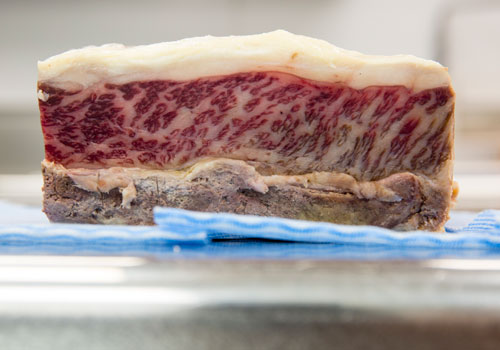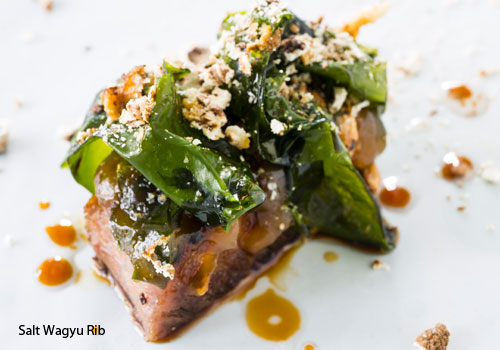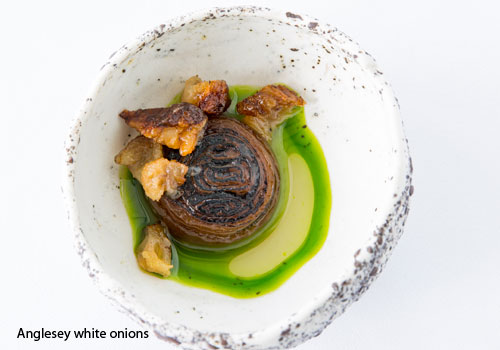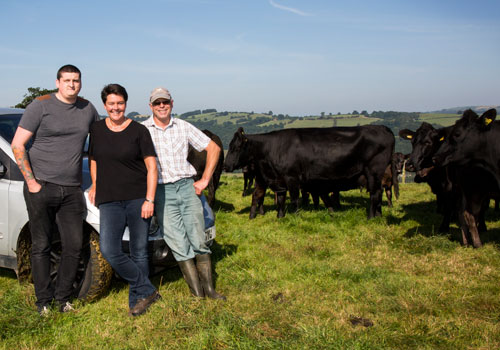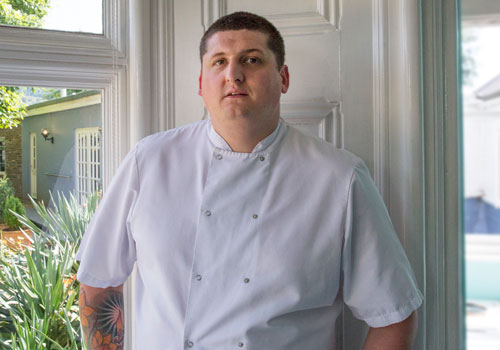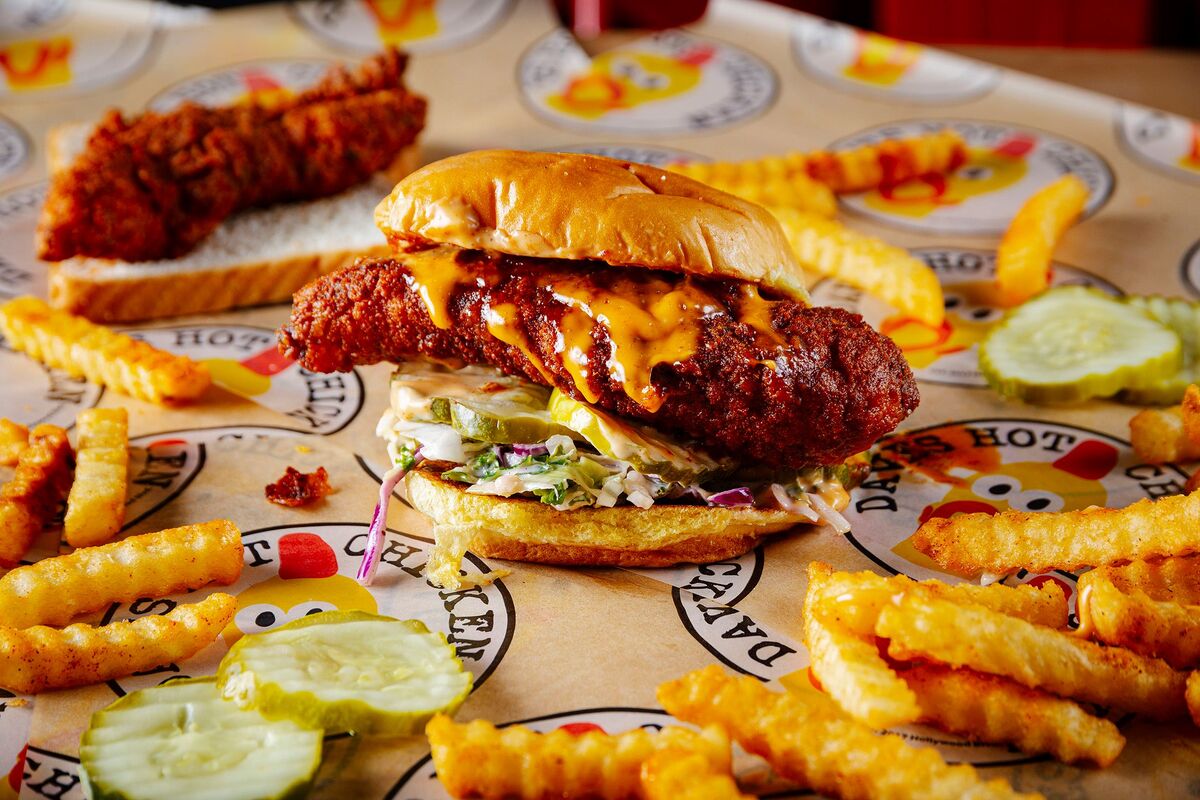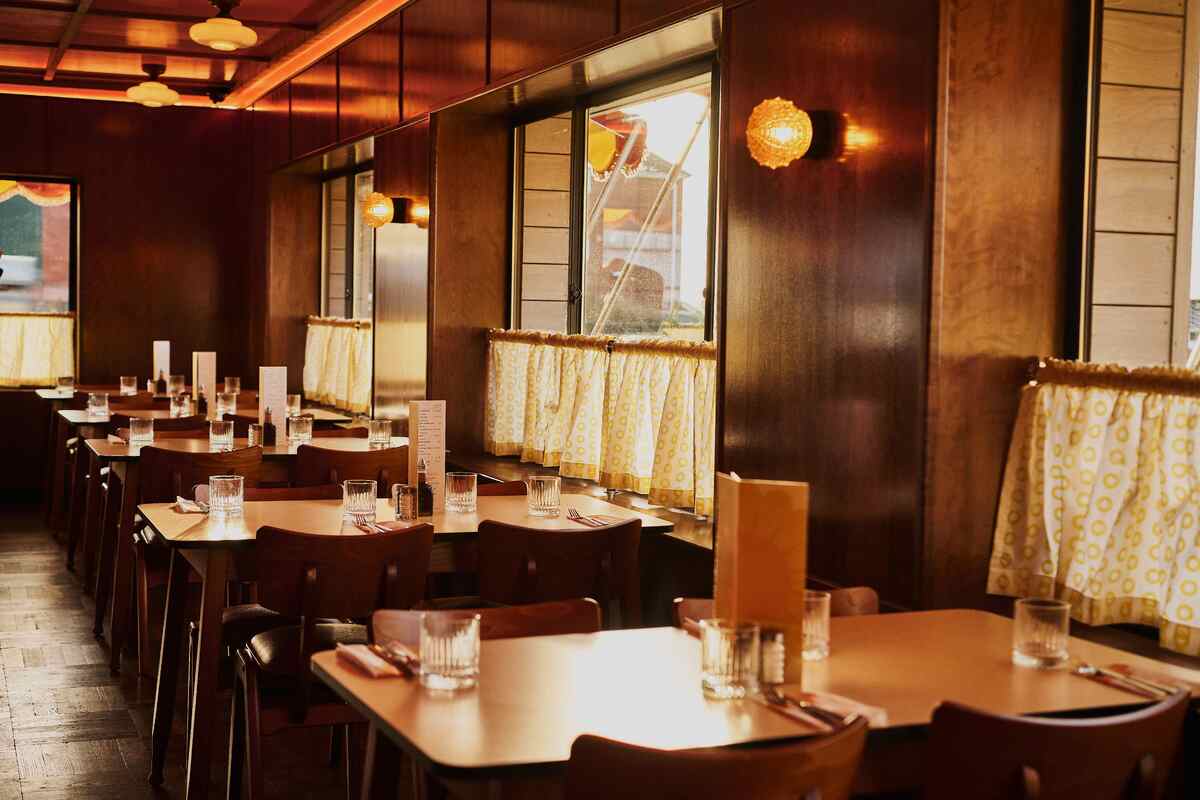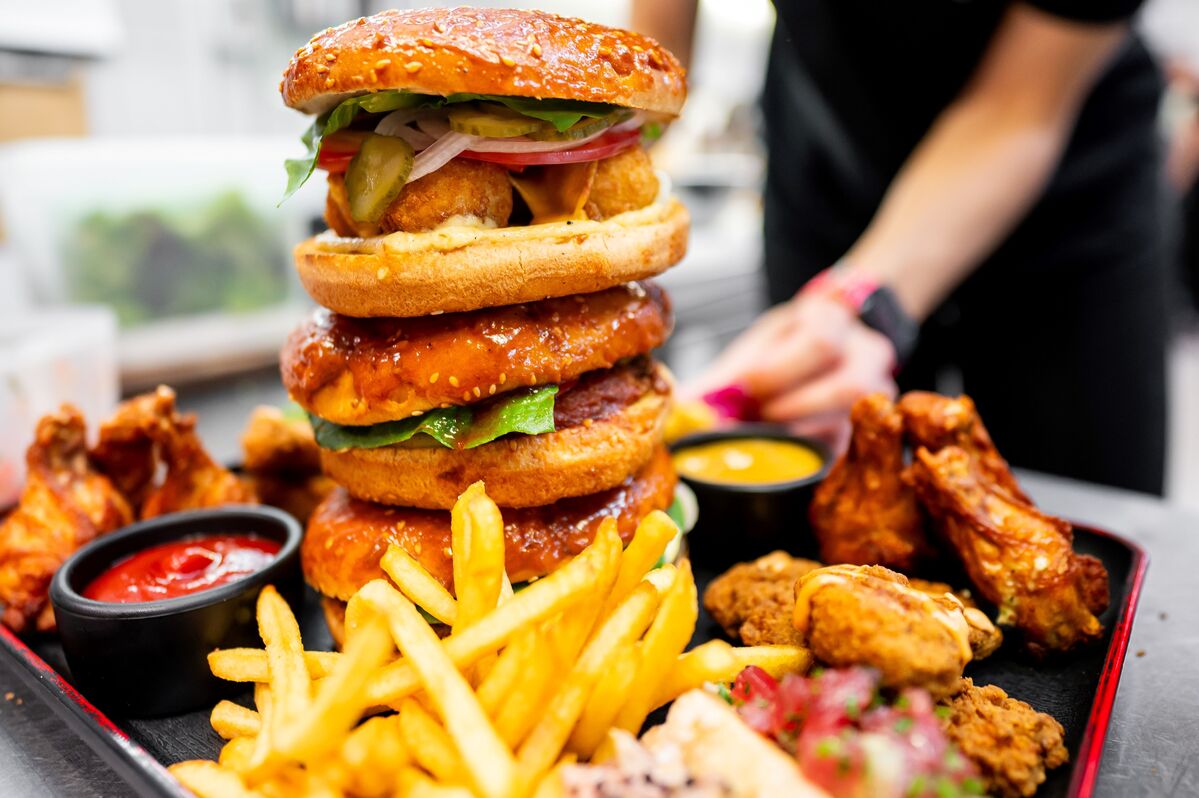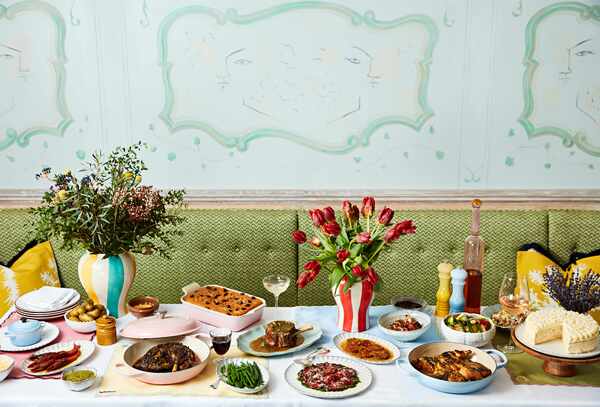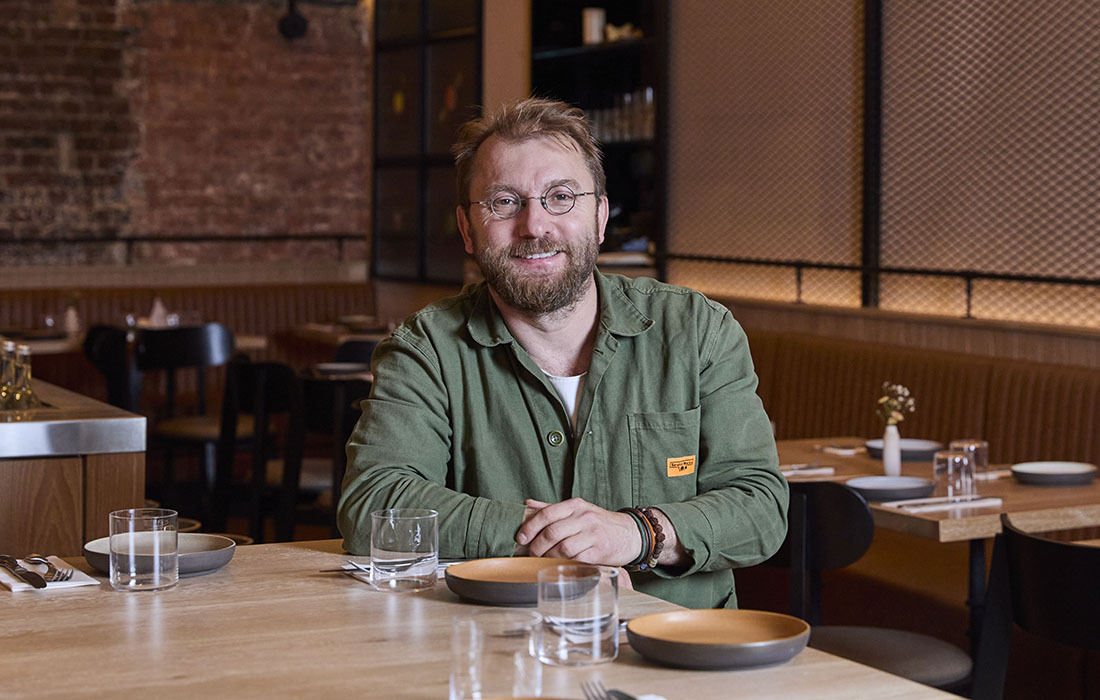Wagyu comes to Wales
The recent renaming of Ynyshir marks a new era for Gareth Ward, Sat Bains' protégé. Michael Raffael discovers how star ingredients, such as locally produced Wagyu beef, are helping the west Wales restaurant with rooms to make the cuisine a guiding light for guests
By now most chefs know what Wagyu (aka Kobe) beef is. The breed is as notorious for its beer-drinking habits as it is for its marbled intra-muscular fat. Until the 1970s it never left Japan, but then Australian farmers started producing it. Restaurants in the UK wanting to serve it have had to rely on imports.
Because Britain in general (and Scotland in particular) enjoys a reputation for its homegrown beef, no livestock farmers considered farming it. Too fatty, and too long to bring to market, would have been powerful reasons for
not giving it more than a passing thought.
A decade ago, Welsh farmer Ifor Humphreys decided to take the plunge and start his own herd. Other than a handful of chefs, like Ynyshir's Gareth Ward or the butchery department at Selfridge's, few know of its existence.
Alternative Meats (www.alternativemeats.co.uk), the company marketing his Welsh Wagyu, dry-hangs it for 28 days before sending it to clients, but it improves further with longer maturation. Seamed joints are more tender than conventional meat and the creamy fat, rich in mono-unsaturated fatty acids, makes unique dripping.
The Scottish-based Highland Wagyu provides competition for its Welsh rival. Together they form a tiny, but growing niche market. If intramuscular fat is a key component of wellflavoured beef (and chefs have always claimed
it is), then Wagyu deserves the prestige it enjoys.
Planning
Gareth Ward runs two tasting menus of up to 15 courses, a lunch menu and a vegetarian menu. The Wagyu figures on all but the veggie one. In cold storage he has bone-in sirloins maturing for 100 days or longer. When one rib is finished, he orders another to replace it, so he has a constant rotation of beef either ripening or being prepared in the kitchen.
Each sirloin is coated in a layer of rendered beef fat, which allows it to age without exposure to humidity. The same fat may also coat saddles of lamb or pork (he ages both). For his salt Wagyu rib, he has to plan
five-day brining cycles, allied to three days slow-cooking in a water bath. Apart from the meat dishes he makes dripping to be served as part of the bread course.
Fermentations (he has about a dozen on the go), soy glazes (replacing salt) and ketchups are part of routine mise en place.
Costing
The restaurant has two £95 tasting menus, a £120 chef's table surprise menu and a £39.50 five-course lunch menu. Ward aims for a gross profit in the mid-70% range.
Salt Wagyu rib
This is the fifth course on the second tasting menu. Each portion is based on a 60g piece of corned short-rib.
Sweet cure 5l water
2kg curing salt
2kg sugar
Slow cooking Bone out. Transfer the joint to a vacuum pack. Cook in a water bath for three days at 72°C. Chill, then cut into rectangular blocks weighing about 60g each.
Serves 1 1-2tbsp sunflower oil (to prevent the meat
sticking to plancha or big green egg grill bars)
60g salted and slow-cooked Wagyu rib
Soy glaze
Shiitake ketchup
Pickled sea lettuce
Roast shiitake jus (roasted, deglazed with soy and strained through muslin)
Puffed wild rice (deep-fried for a second at 230°C)
Preheat the plancha and the Big Green Egg before service. Brush the plancha with oil, then sear the meat on each of its four faces to colour lightly â" for about a minute on each. Rest above the range until ready to finish the dish. Brush the barbecue grill with oil. Lay the beef on the grill and smoke for about two minutes. Put the beef on a plate and brush lightly with soy glaze. Pipe shiitake ketchup on top. Next, add a little pickled sea lettuce.
Add a splash of shiitake jus and finish with lightly crumbled puffed wild rice.
Pickled sea lettuce Just before serving, marinate sea lettuce in a pickle of light soy, rice wine vinegar and sugar.
Shiitake ketchup Blend raw, fresh shiitake mushrooms and strain the juice. Heat and thicken with 1g agar agar per 100g liquid. Transfer to a squeezy bottle. Use about 10g per serving.
Welsh Wagyu 1 2 3 4 This is the eighth dish on the first tasting menu, a series of four bite-sized portions served in succession.
1. Anglesey white onions Cook white onions, about 60g each, in dashi mixed with Welsh beer, maple syrup and sherry vinegar, then confit them in Wagyu dripping. Drain and serve one per portion in a bowl with green onion top oil and a fermented onion pickle (think pickled onions, but milder).
2. Wagyu burger Mince the strip of flank from a bone-in sirloin of 100-day-aged Wagyu beef with onion and shallot. Vacuum pack and press. Sear 30g burgers on the oiled griddle and finish in the Big Green Egg to give a hint of smokiness. Top with a sourdough mayonnaise (bread soaked in dashi, blended, and mixed with mayonnaise to taste) seasoned with dashi, fermented lettuce (like sauerkraut), toasted and blitzed sesame seeds and a hint of charred croutons.
3. Roast 100 day-old sirloin Cut the eye-muscle into 60g rectangles, leaving 1cm of back-fat on the end of the lean meat. Sear on the griddle and finish with smoke as for the burger (above). Brush with soy glaze and pipe kohlrabi ketchup on the
meat to hold transparent slices of kohlrabi.Â
4. Wagyu fudge A cube of traditional fudge in which soft dripping replaces butter.
Miso treacle tart One of four desserts on both tasting menus, itâs a deconstructed version of the old-fashioned British classic. Crumbled sourdough breadcrumbs are baked at low temperature in a pot with eggs, cream, golden syrup and miso.
A quenelle of the treacle base is served with sourdough crumbs, soured double cream and a granita of freeze-dried sake.
Bread Bread is a separate course on all four menus â" two tasting, the lunch and the veggie. The sourdough bread is made with buttermilk rather than water. Itâs accompanied by a cultured butter that the kitchen prepares and a
small quenelle of Wagyu dripping (except with the vegetarian menu).
Welsh Wagyu beef
Wales has one Wagyu beef farmer, Ifor Humphreys, who has a herd of Wagyu- Aberdeen Angus crosses on his 300-acre Montgomeryshire farm. He rears his cattle for 30 months to slaughter. The newborn calves
spend their first summer on grass with their mothers. The cattle spend winter indoors and a second summer outdoors. They live the last six months before slaughter on a high-ration diet of wheat, barley and oats. During this period they receive a daily tipple of Montyâs beer â" partly because of the Kobe beef tradition and partly because Japanese farmers once believed it stimulated appetite.
Japan and Australia have established a grading for Wagyu based on measuring the proportion of intramuscular fat, which can vary between 15% and 60%. The UK doesnât yet have a similar system because Wagyu meat is still in its infancy here. Alternative Meats butchers a handful of carcasses a month, and sends photographic evidence of the marbling to customers as an indication of the meatâs qualityÂ
Gareth Ward
Three years ago Gareth Ward joined Ynyshir Hall as its chef. Now, having taken over the running of the property from the late owner, he is converting the luxury 10-room hotel into a restaurant with rooms. Instead of a hideaway destination in deepest Wales, he aims to make it a place where his cooking will take precedence.
âWe want to turn things on their head and champion the food, â he says. The change, he feels, would allow him to concentrate on his personal style of cooking. Rather than catering for hotel guests seven days a week, he plans to open for five days only and to close for six weeks throughout the year. To emphasise his approach, he decided to drop the word âHallâ.
The tie with Relais & Châteaux will disappear and the website will focus on the cuisine. Itâs a dramatic gamble from the 35-year-old Michelin-starred chef, who admits that he has committed everything to promoting his individual cooking skills: âItâs uncharted territory for us, but itâs a risk worth taking. In my opinion, it wasnât working as a hotel. It was very seasonal and we were relying on the summer to pay for the winter.â
His approach to food, as heâs realised, has little in common with the modern British cookery ethos. At times, the deconstructed dishes, such as the miso treacle tart, reflect the years he spent working with Sat Bains and the influence of the two-Michelin-starred chef. Another strong influence is the fusion of Scandinavian-inspired ferments, vinegars and ketchups with Japanese seasoning and design.
His bonbon-sized portions, he claims, encourage diners to fill their mouths with the combined flavours and textures on the plate: âWe dress each dish so you can only eat it one way. Itâs all balanced and works well as a whole.â
Instead of an à la carte, he creates two tasting menus. Each is distinctive, but both are designed to tell a kind of edible story.
Fresh, acidic dishes follow richer ones. Wagyu is arguably his star ingredient. âItâs something I fell on by chance,â he says. âI was doing research because I wasnât satisfied with a Birmingham supplier. Ifor Humphreysâ farm was almost on my doorstep. I fell in love with it and what I could do with it. Itâs in desserts and the bread. Iâve got four servings of it on one menu.â



